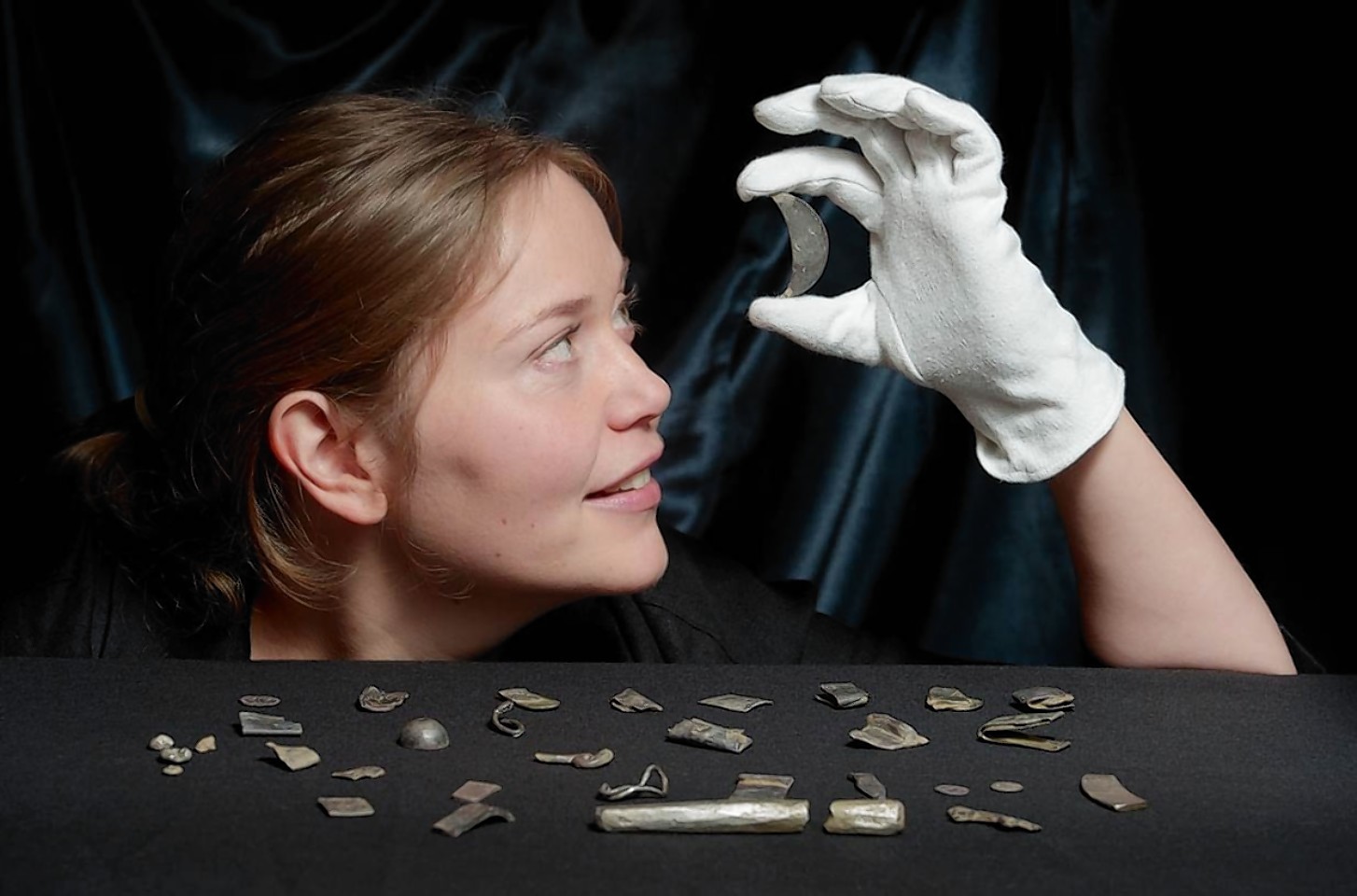A hoard of late Roman and Pictish silver coins has been found buried in a north-east field.
More than 100 pieces of silver, coins and jewellery were discovered by archaeologists from National Museums Scotland and Aberdeen University’s Northern Picts Project.
However, the exact location in Aberdeenshire where the find was made is being kept a closely-guarded secret incase any eager silver-diggers with metal detectors tried to hunt for their own piece of treasure.
The dig was led by Gordon Noble, a senior lecturer Aberdeen University’s archaeology department.
He said: “The new finds include late Roman coins, pieces of late Roman silver vessels, bracelet and brooch fragments and other objects that would have been highly prized objects in their day.
“Our work in the north-east of Scotland is increasingly showing that Pictish communities in this area were part of powerful kingdoms in the early medieval period.”
Mr Noble described it as an “exciting new find”, and said it was part of a broader phenomenon of hacksilver hoards from across Europe from the 4th to 6th centuries AD.
He added: “Silver objects were chopped up into bullion and then used and exchanged as payment, bribes, tribute and reward.
“People buried their wealth to keep it safe, but many did not return to recover their hoard.”
Experts from National Museums Scotland will now carefully analyse, describe and catalogue each individual piece of the find – which is the most northern late Roman silver hoard ever unearthed in Europe.
Senior curator Martin Goldberg, of National Museums Scotland, said: “The research project will enable us to shed new light on the interaction between the Picts and the late Roman world and reconsider what some older finds in our collection can tell us about early medieval Scotland.
“It is a hugely important discovery being Europe’s most northerly Late Roman hacksilver hoard, and also containing otherwise unique Pictish silver.”
Elements of the hoard discovered by team will be on show from January 20 to May 31 next year at Aberdeen University’s King’s Museum.
